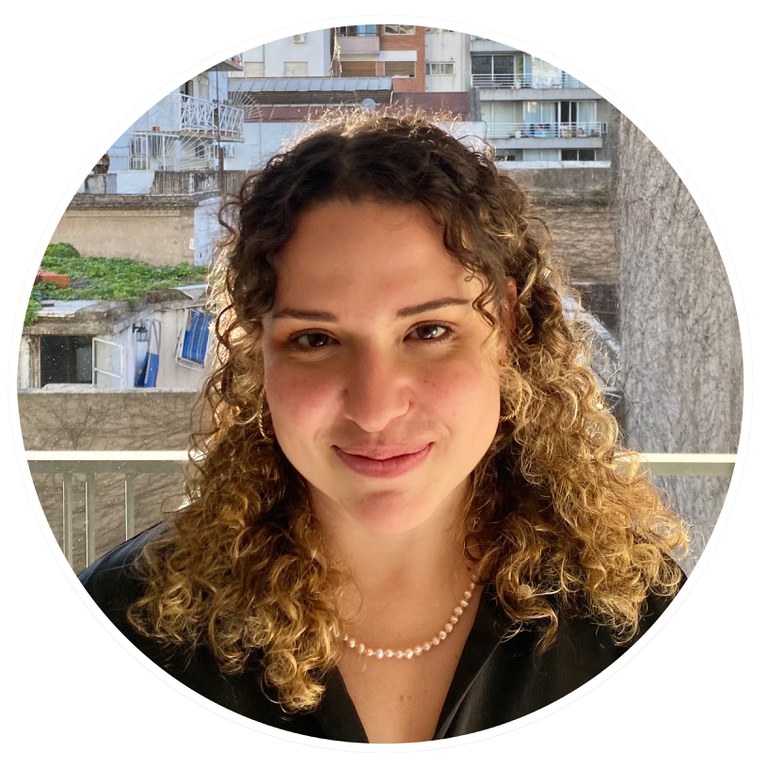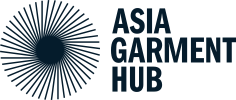"Our goal is to nurture young artists in Cambodia"
By Juliette Tafreschi, March 20, 2024
What initially began as a small project to upcycle and reuse old clothes has grown into a sustainable fashion enterprise that transforms recovered textile waste into wearable products, empowering local designers ans raising awareness about the environmental impact of the fashion industry. Today, ReMade in Cambodia works with 33 Cambodian designers, holds an annual fashion show and offers upcycling and education workshops on sustainable clothing in its newly opened studio. A conversation with Alyssa Erin Kardos Loera, Executive Director, ReMade in Cambodia.
What inspired the creation of ReMade in Cambodia? Could you share the initial idea?
ReMade in Cambodia was born out of my frustration and guilt as an American arriving in Cambodia on a Fulbright Grant. Initially, my focus was on cultural exchange as an English teaching assistant. However, upon arrival, I became deeply immersed in understanding Cambodia's secondhand trade and the detrimental impact of the fashion industry on the country, both environmentally and artistically. Research revealed overwhelming statistics and stories of people affected by practices like burning clothes and the presence of garments in rivers. The broader connection between clothing waste and climate change added to the sense of urgency. My initial motivation was to make a positive impact by reclaiming fashion and artistry in Cambodia while addressing textile waste issues. I began by reaching out to designers and collaborating with schools, engaging with individuals across the spectrum of experience. Our first project was an upcycle fashion show, where we repurposed clothes from a local secondhand store, giving them new life. This initiative aimed to spark conversations about sustainability in a country with a thriving fashion industry. Editor's note: ReMade in Cambodia's next fashion show will take place this Saturday, March 23. You can log in via livestream. Find the link HERE.
How come there is so much textile waste in the river?
Landfills are flooded with clothing, which makes up around 60% of their contents. It was originally thought that people were dumping their clothes directly into the rivers, but further investigation reveals a more complex reality. Upon examination, the clothing found in rivers includes offcuts, multiple copies of the same dress, and branded items, indicating industrial waste rather than just individual. This highlights the immense amounts of waste generated by the fashion industry. Additionally, there's a gap in understanding the informal industry involved in the processing of factory waste and unsold garments, which ultimately leads to their presence in rivers.
What are core values of ReMade in Cambodia? How have these principles shaped the organizations activities and initiatives?
When it comes to our mission, I see it in two spheres. Firstly, there's the artistic development aspect, which involves reclaiming design and artistry here in Cambodia. This is why we're called ReMade in Cambodia – it's about reclaiming our voice in the fashion industry and developing our own unique style. Working with local designers, I've witnessed incredible creativity and innovation, especially in upcycling methods. Our goal is to nurture young artists in Cambodia, empowering them to promote conservation through their art. Secondly, there's the environmental aspect, where we reclaim and repurpose waste to create something new and meaningful. This dual approach drives our operations, bridging artistry with environmental sustainability.
Why is your core value accessibility?
Our core value of accessibility guides everything we do. We strive to ensure that our programming and social media content are accessible to everyone by providing content in both Khmer and English. Additionally, our events are free and open to the public, breaking away from the exclusivity often associated with the fashion industry. We aim to promote designers from diverse backgrounds and empower young people to explore their artistic potential. Embracing diversity and inclusion, our model casting welcomes individuals of all backgrounds and body shapes, challenging traditional beauty standards. The overwhelming response to our inclusive approach, with over 200 attendees in the first year and 300 in the second, reflects the positive impact of our commitment to accessibility and diversity.
How did ReMade in Cambodia envision involving the local community in its initiatives?
A fundamental aspect is community empowerment. Our model revolves around providing opportunities for our community to thrive, whether through public education, artistic development, or participation in events such as our fashion shows. Our rapid growth from the beginning to today, with numerous partners and the establishment of our studio, has surprised us. Environmentalism can feel overwhelming, but we want to provide a platform for individuals to process their emotions and use their creativity for positive action. We are especially excited to include young people, who are often overlooked in discussions about art and the environment, despite being an important demographic in Cambodia. Breaking down barriers and giving them a voice is an essential part of our mission.
Are there specific partnerships or collaborations that are worth mentioning?
Our primary collaboration, which has significantly expanded, is with Everwave, a German waste management startup. Everwave specializes in collecting waste from rivers and smaller waterways, particularly in Cambodia, to prevent it from reaching the ocean. Our partnership with Everwave grew after connecting with them and collaborating with the Wildlife Conservation Society. This led us to encourage designers to incorporate the textile waste collected from rivers into their designs, amplifying the message about river waste. Our collaboration has evolved beyond merely working with collected textile waste. Recently, we've partnered with Everwave to develop their zero-waste center further. This includes installing washing machines to clean textiles for reuse, implementing a water filtration system to minimize environmental impact, and involving waste-separation workers in creative projects. This expansion marks a significant step in our commitment to environmental sustainability and community engagement.
How did you initially learn to upcycle and recycle fabrics?
Before Everwave's involvement, we were already engaged in upcycling and recycling clothing. We owe much of our progress to the creativity of designers who pioneered various techniques to breathe new life into discarded textiles. These designers, through their experimentation and dedication, have uncovered innovative ways to repurpose materials. From transforming curtains into stylish jackets to incorporating intricate artwork into garments, their work showcased the boundless possibilities of sustainable fashion. Through events like our fashion show, we showcased these innovative approaches. Now, with Everwave, we continue to explore new methods, documenting and sharing them with the public for awareness and inspiration.
What are the main activities of ReMade in Cambodia as a design house studio? How does it function as a place for people to bring and upcycle their old clothes?
When you step into our studio, you'll encounter a unique blend of fashion show creations and secondhand clothes, laying the foundation for understanding sustainable fashion. Beyond browsing, you can engage with Re-Made in various ways. Bring in your old garments for repair or upcycling into something new, even transforming sentimental pieces into fresh attire. Browse through our designer lookbook and select a designer or opt for a surprise. Upon purchase, your tag will detail materials used and the amount of textile waste repurposed, fostering transparency. Furthermore, you can request custom-made items crafted from river-sourced textile waste, demonstrating our commitment to sustainability. Additionally, we offer pre-upcycled products, such as bags, with larger projects catering to businesses. Collaborating with industries like hospitality, we transform their textile waste into valuable items, be it new uniforms or promotional gifts. This approach brings new life to discarded textiles.
Can you elaborate on the workshops and educational aspects where people can learn about the impact of their clothes and their origins?
Our primary focus remains on education, with services like custom-made pieces aimed at generating profit. Runway pieces are priced higher to support designers, while everyday products and secondhand clothes are kept affordable, around $10, ensuring accessibility. We're also dedicated to hosting workshops, fostering artistic development and brand creation. The studio embodies our commitment to community empowerment, serving various audiences while prioritizing artist development. Over the years, we've engaged in public education through events, niche workshops, and collaborations with schools to integrate textile waste management into curricula. Each year, we involve around 30 designers and 30 models, providing firsthand learning experiences at the zero-waste center, fostering discussions on environmental conservation and artistry. Notably, one of our designers even participated in the global fashion summit in Denmark last year, highlighting our impact on a global scale.
You mentioned plans to bring mechanical recycling on a larger scale. Could you provide more insights into this initiative?
We started with our fashion show and are now expanding into an upcycling studio, offering new products and services to the community. Our next goal is to make a broader impact by addressing textile waste. We aim to prevent waste from ending up in landfills and rivers while also exploring mechanical recycling. Currently, Cambodia lacks options in this area, but we're actively collaborating with partners to develop solutions for the future. Do you get feedback from the community or the people you work with? Our aim is to create a safe and creative space for Cambodian designers to feel they can develop their own industry. We've already seen positive outcomes with designers and brands emerging from our platform, focusing on using deadstock materials rather than new fabrics. I believe that our efforts are reshaping the fashion industry here by setting a new standard for inclusion and sustainability. People, including multipliers, are actively involved in our work. We are keen to closely monitor our impact on conservation, especially in education. This year we will be conducting surveys before and after the show to measure the public's awareness and understanding of the conservation issues we highlight.
Alyssa Erin Kardos Loera discovered her creativity at the intersection of global health and the arts. With a bachelor’s degree in Global Health from Georgetown University and enriched experience at the Laboratory for Global Performance and Politics, she channels this amalgamation of knowledge and artistic expression to enhance community well-being. A former Fulbright Scholar in Cambodia and current IIE Centennial Fellow, she remains dedicated to driving positive change through her interdisciplinary pursuits.
